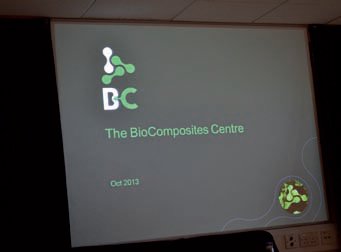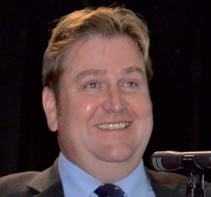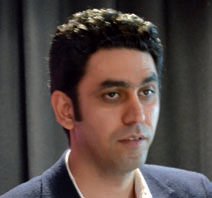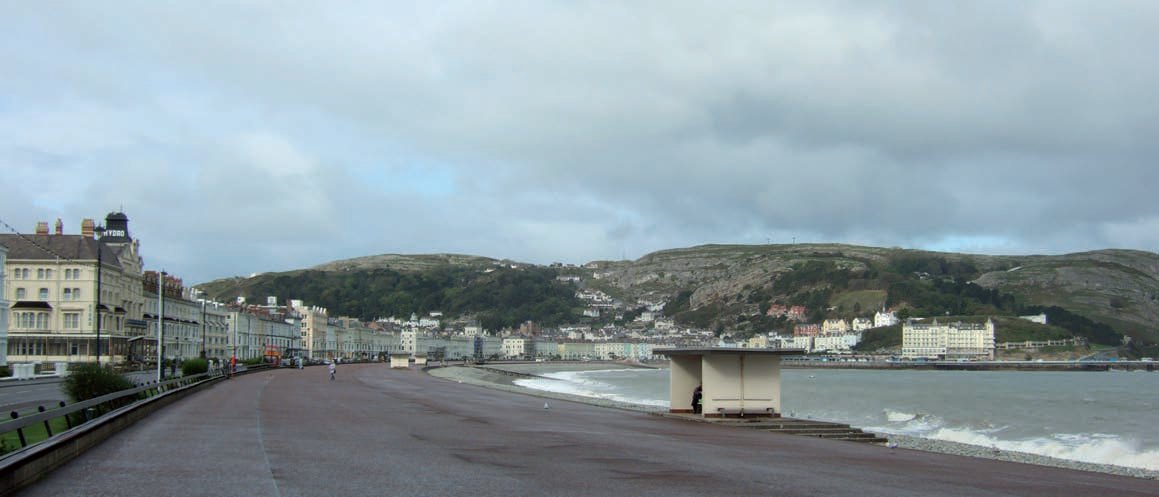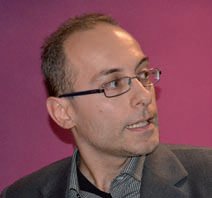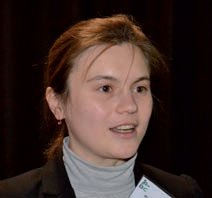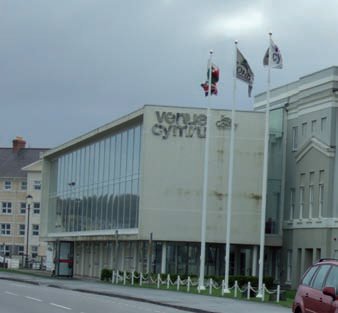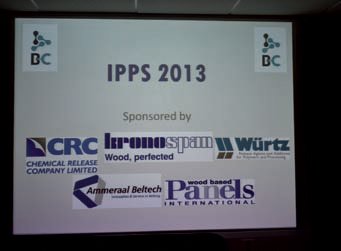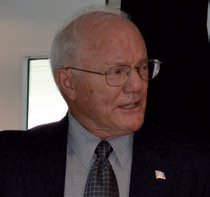Llandudno International
24 January 2014The 14th edition of the International Panel Products Symposium, IPPS, took place in North Wales in October. Delegates from various backgrounds, and many parts of the world, attended and Mike Botting was there to bring this taste of the papers presented.
The first symposium, organised by the BioComposites Centre, which is based at Bangor University in North Wales, UK, took place in Llandudno in 1997.
Originally an annual event, it later became biennial, alternating with a masterclass, and this year saw the 14th edition of IPPS. Delegates came from the panel industry, its supplying industries and academia to hear 23 papers presented over two days.
In opening the symposium, Rob Elias, director of the BioComposites Centre, gave an overview of the considerable amount of research, past, present and already committed to, in which his organisation is involved.
The year 2014 marks the 25th anniversary of the BioComposites Centre, which has always been a self-financing contract research institute concentrating on fibre technology, fibre composite materials and bio-technologies, both in the laboratory and in full-scale industrial trials.
Session 1 of IPPS this year was on The built environment and the first speaker was Volker Brombacher, from the ETH Zürich Institute and insulation board maker Pavatex SA. The title of his paper was The investigation of thermal conductivity and moisture behaviour of fibreboard and material combinations.
"Low density fibreboards are part of a developing market," said Mr Brombacher. "However, the knowledge of their hygrothermal behaviour is currently limited."
He and his team set out to rectify that situation by examining industrial products and combinations of them. These included wet-and dry-process fibreboards, flexible wood fibre and hemp insulation, and a mineral wool insulation with nano-porous fibres.
"Contrary to earlier papers [on the subject], no strong correlation was found between density and thermal conductivity in the range of 110-150kg/m3 and dry process boards showed lower results in water vapour resistance factor than wet process boards of the same density," concluded the speaker. "This needs further investigation."
The next speaker was Eva Höllbacher of Kompetenzzentrum Holz, Germany, whose subject concerned The measurement of VOC emissions from wood based building products under real room conditions. For this the team created idealised model rooms.
Ms Höllbacher said the typical VOCs emitted by wood are aldehydes and terpenes and these are classified as playing an important part in Indoor Air Quality (IAQ).
She concluded that VOC emissions showed a clear decline over time, are comparable to the raw material, and that emissions from OSB are influenced by the production process.
Thermal characteristics of panels from cellulose fibres was presented by Morwenna Spear of BioComposites as the author, Sergej Medved of the University of Lubljana, Slovenia was absent through illness.
The objective was to use recycled newspaper to make an insulation panel and the results were said to indicate that such panels, with good thermal insulation characteristics, can be successfully produced.
After coffee the second session, Formaldehyde testing, was kicked off by Martin Ohlmeyer, Thünen Institute of Research, Germany.
He spoke on Testing parameters affecting the gas analysis value of particleboard.
This work concentrated on using this method to test uncoated panels, as well as the traditional use for coated ones.
The team concluded that gas analysis is a useful method for uncoated panels, with the potential to increase its efficiency and, therefore, make it competitive to the perforator. They also concluded that a moisture content correction factor can be calculated, but that further work is needed on this area.
The next speaker was Vera Steckel of GreCon, Alfeld, Germany, whose subject was Developing a new method of measuring formaldehyde emissions from wood based panels.
Intended for use in panel makers' own laboratories, the system employs a gas chromatograph column coupled to a high-field asymmetric waveform ion mobility spectrometer, measuring the formaldehyde in gaseous form, explained Ms Steckel.
Her team concluded that in future trials, the gas analysis method should be used as a reference, beside the perforator method.
The method shows promise, but the speaker said that more testing under field conditions was required, together with improvements to the system's recalibration and repeatability aspects.
After lunch on Day one, Session 3, Enhancing performance by additives and processing, began.
Keynote speaker, professor Roger Rowell, professor emeritus at the University of Wisconsin, US, began the afternoon session with the Hierarchical shift for wood panels from biocomposite to biomaterial.
"Wood is a composite made up of cellulose, hemicellulose and lignin in a threedimensional matrix," he began, pointing out that wood's properties vary from species to species and from tree to tree.
"To increase biological durability of wooden panels, we usually treat the wood with toxic chemicals or turn to tropical wood species.....if you change [wood's] chemistry you change its properties [and thus its performance]," he said.
Professor Rowell said that it is possible to produce stable and durable wood based composites and that acetylation of solid wood and wood fibre provides a means to that end, without using increasingly rare tropical hardwoods. Dimensional stability, durability and wet and dry mechanical properties are all improved after acetylation, he said.
"This conversion from a natural bioarchitecture biocomposite into a modified or designed bioarchitecture biomaterial takes wood into higher-value markets," concluded professor Rowell.
A familiar speaker at IPPS, and regular contributor to WBPI, Dr Mark Irle of Ecole Supérieure du Bois, then presented A study of the mobility of formaldehyde during hot pressing of particleboard mattresses.
He pressed mattresses without resin, but with a small dose of formaldehyde solution or slices of 'old' particleboard in one corner of the mattress.
He concluded that formaldehyde solution is very mobile during pressing, while that from old particleboard is less mobile but is still redistributed.
Keith Godber of CRC Ltd, UK, spoke on Reducing formaldehyde emissions: a new approach using additives as alternative to employing non-formaldehyde based binders such as pMDI.
He concluded, from industrial trials, that formaldehyde scavengers do reduce formaldehyde emissions, but can affect board properties, while PAT® additives can help to reduce emissions when using E1 or E1/2 resin systems.
Formaldehyde emission in wood based panels: effect of curing reactions was the title of the presentation by Jorge Martins from the University of Porto, Portugal.
His team's work showed that hexamine, formed during curing, can act as a formaldehyde release agent in panels and that the use of acids as catalysts should not be disregarded.
Carsten Mai of the University of Göttingen reported on The use of silane oligomers to improve the outdoor performance of particleboards.
The study compared the use of amino-alkyl siloxane oligomer as a water repellant with conventionally-used paraffin waxes in PF- and MUPF-bonded boards under moist and outdoor weathering conditions.
The team concluded that the siloxane oligomer formed by silane precursors containing amino-propyl and hydrophobic alkyl groups improved bending strength, MoE and internal bond strength in the tested panels, when compared with conventional wax emulsions. However, wax treatment imparted greater hydrophobicity than the siloxane. So, while the oligomers used can enhance the mechanical and water-related properties of panels, they are not a real alternative to paraffin wax because of considerably higher prices for silanes.
That marked the end of day one of IPPS 2013 and delegates headed for the excellent Conference Dinner at the St George's Hotel on Llandudno's famous seafront, to fortify themselves for the next day's presentations.
Day two began with Session 4, entitled Raw materials.
It opened with a keynote speech by Professor Pete Walker of BRE Centre for Innovative Construction Materials, University of Bath, UK. His subject was Prefabricated biocomposite panels: delivering lower carbon construction and healthier buildings.
Professor Walker pointed out that interest in traditional natural building materials such as hemp, straw, clay and lime has grown over the past two decades. However, the move away from 'wet trades' in the construction industry, in favour of prefabricated panels, mitigates against the use of such materials. Thus, he said, natural materials must demonstrate reliability and consistency of quality if they are to be widely adopted.
To this end, Professor Walker reported that he had successfully developed prefabricated panels that addressed concerns about straw bale and hemp-lime construction and said that wall panels using bio-based materials aim to contribute to improved IAQ through moisture buffering, VOC capture and photocatalysis.
The next speaker was Graham Hilton of Resource Efficiency Services LGC Ltd, Mona, Wales. His subject was Increasing the use of English grown wood - a policy perspective.
He suggested that a concerted effort is required to overcome current barriers to its use, combined with increased supply with a commercial consolidator and an improved grants system.
European hardwoods for reducing dependence on pine for OSB was the subject of the presentation by Ali Akrami, university of Hamburg, Germany.
The team (including Marius Barbu of Transilvania University) made OSB from mixed strands of beech and poplar and found that the resultant panels at least met the minimum requirements for OSB2, offered higher mechanical values and reduced thickness swelling, and could reduce the demand placed on softwood resources in Europe when there are increasing pressures to safeguard softwood forests.
After a coffee break, Session 5 began, entitled Life cycle assessment and certification.
The first speaker was Callum Hill of the Norwegian forestry and landscape institute and the title of his paper was Getting the best out of timber - timber products, industrial ecology and carbon sequestration.
"The wood products industry is one of the few on the planet able to produce its products sustainably," said Mr Hill, adding that the industry needs to lobby effectively and report its story on sequestered carbon.
"The emissions of green house gases associated with the processing, maintenance and transport of timber products must not exceed the quantity of atmospheric CO2 stored [embedded] in those products," said the speaker. "However, it is important that the results for different life cycle analyses (LCAs) of similar products are comparable, hence the need for environmental product declarations (EPDs)." These EPDs, the process for obtaining which he described, are enshrined in ISO 14025.
Mr Hill concluded that "It is vitally important for the industry to be aware if what is happening with the standards (eg changes to PAS 2050 between 2008 and 2011)."
Next was Piers Sadler of Piers Sadler Consulting, who spoke on Carbon sequestered in UK forest products and wood based panels in construction: helping to meet the UK's greenhouse gas emission reduction targets.
He concluded that "....There is the potential to store a significant percentage of UK greenhouse gas emissions in harvested wood products and in wood products being used in construction."
Desmond Dolan of NUI Galway, Republic of Ireland, presented his paper Gate to gate life cycle assessment of OSB products.
The objective of the project was to demonstrate how the carbon impacts associated with OSB production can be quantified using LCA.
"The use of sustainable construction materials, such as wood, has a major role to play in reducing our carbon footprint," said Mr Dolan. "It is the only renewable major building material." He added that every kilogram of dry wood used can potentially store up to 1.83kg of CO2 equivalents.
The speaker concluded that: "LCA allows us to accurately assess the total environmental impact factors associated with OSB products."
The final speaker of the morning was Luísa Carvalho of Porto University. She spoke on Development of a LEED-certified phenol formaldehyde resin.
The speaker explained that LEED (Leadership in Energy and Environmental Design) evaluates environmental performance, from a whole building perspective, over a building's life cycle.
"To be certified, wood composites in building must have no added urea formaldehyde resins," she said. Hence the need to develop a LEED-certified PF resin.
Ms Carvalho's team discovered that it was possible to conclude that "The presence of a higher amount of base [alkali] in the final resin results in a more stable resin, with much better physico-mechanical properties. Base addition also results in a resin with low content of phenol due to its higher consumption during the condensation step."
The speaker added that "The bestperforming resin in the study showed very good values for internal bond strength and formaldehyde content, allowing its use in socalled 'green building' construction."
A welcome lunch break ensued, followed by the final part of the conference, which was Session 6: Recycling.
Sarah Himmel, University of Göttingen, Germany, opened the session with The influence of the presence of recovered wood on the formaldehyde release of particleboards.
"The use of recovered wood for particleboard production is economically essential in Europe," said Ms Himmel.
She pointed out the problem that recovered wood from old furniture, for example, may have been produced years before even the E1 limit was introduced and can thus be high in formaldehyde content, even after a long service life. The researchers used recovered wood from old furniture and and samples from a woodyard.
They concluded that the formaldehyde content of an adhesive-free particle mat can be calculated from the formaldehyde content and the ratio of the individual components, and that the formaldehyde emission of pMDIbonded particleboard could be predicted from the content of the individual particle raw material or the adhesive-free particle mixture. Ms Himmel concluded by pointing out that, with decreasing formaldehyde limits, it is increasingly important to consider the contribution of the wood raw material itself to the formaldehyde release of the particleboard.
Michele Libralato, of the R&D department of PAL srl of Italy presented the company's Cleaning Tower concept for the cleaning of recycled wood particles.
The penultimate paper of IPPS 2014 was presented by Thomas Franz of Baumer Inspection, Germany and was entitled 'Flashing sky technology' for the low-cost and high-volume optical sorting of waste wood debris and panels.
Using a camera to screen wood particles on a conveyor belt is limited by the thickness of that layer, which obscures some particles.
Hence Baumer has developed a system to use in-flight imaging of the wood material employing very fast sequential stroboscopic illumination from different angles and with different wavelengths. Sophisticated image classifiers installed in the camera give "robust identification" of the material. Very fast pneumatic ejectors (300-600 blows per second) then eject unwanted debris.
Baumer is now seeking a particleboard manufacturer to test the system.
The final speaker at this year's symposium was Elena Tikhonova of FCBA, Grenoble, France, who spoke about An opportunity for hardboard recycling.
Ms Tikhonova's team evaluated three types of wet-process hardboard: industrially manufactured; a laboratory produced sample; and a hybrid sample containing primary recycled paper rejects.
The boards were first re-pulped by dissolving them in water and then characterising them.
The team discovered that fibres from the surface layer of hardboard were more difficult to separate and that the board's recyclability is affected by the initial conditions of hardboard manufacturing.
They also concluded that the use of repulped fibres containing only wood slightly reduces the board bending properties and internal bond. The use of paper rejects in hardboard production, however, does not decrease the potential for hardboard recycling.
Dr Rob Elias closed the symposium by reminding delegates that the BioComposites Centre will be celebrating 25 years in business in 2014 and that there will be a Master Class held in that year; the next IPPS symposium will be held in 2015.
